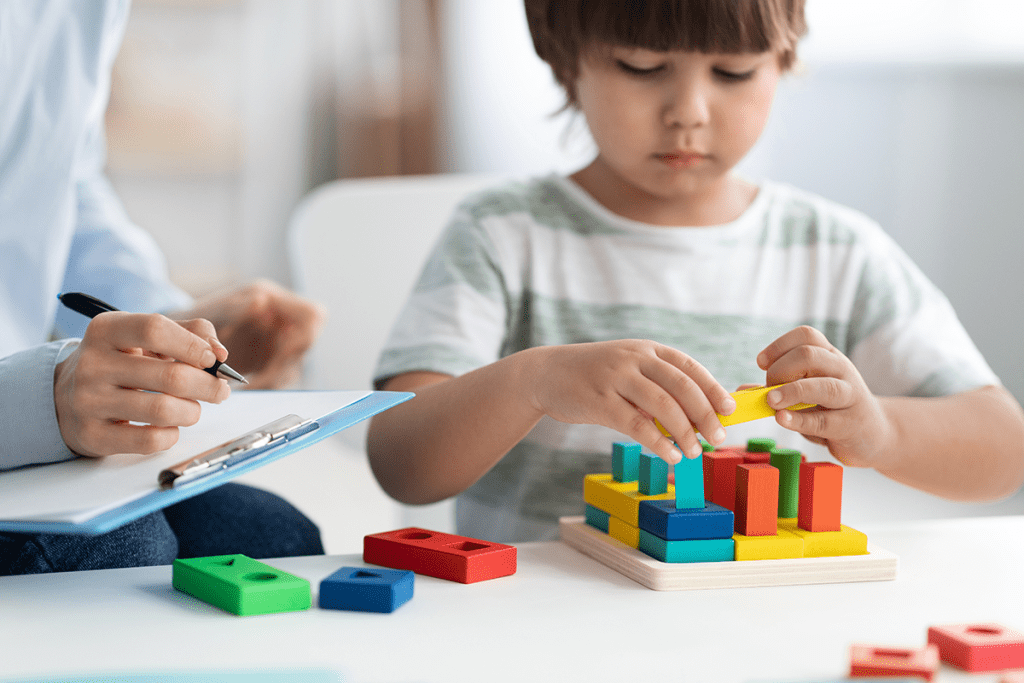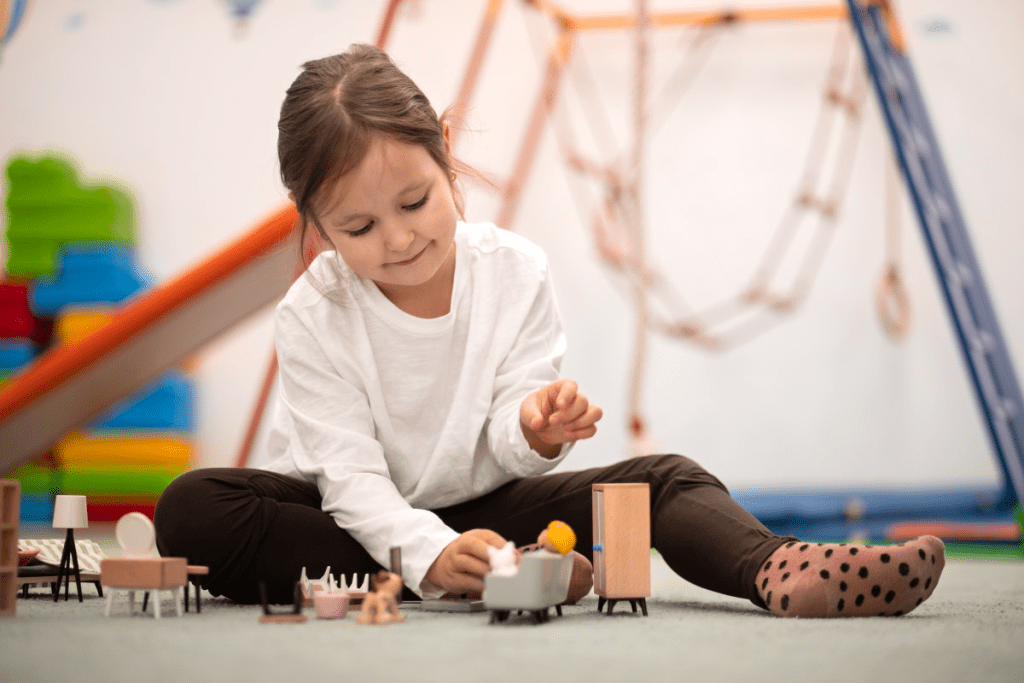Last Updated on November 14, 2025 by

It’s important to know the difference between growth and development in child growth. These terms are not the same, even though they’re often mixed up. They affect a child’s health, learning, and happiness.
Growth means the physical changes a child goes through, like getting taller and heavier. Development is about the skills and abilities a child gains, like thinking, feeling, and socializing.
Knowing the difference between growth and development helps parents, teachers, and doctors support kids better. This article will look at the 10 main differences. It will show how these ideas are connected but also different.
Growth and development are often mixed up, but they mean different things in child care. Growth refers to the measurable physical changes in a child’s body. This includes getting taller, heavier, and having a bigger head.
Growth charts help track a child’s physical growth. They show how a child has grown over time. Doctors use these charts to spot any growth problems early.
For example, a child’s height and weight are checked often. They are plotted on a growth chart to make sure they are healthy.
Some key aspects of growth include:

Development is about getting better at things, like thinking, feeling, and social skills. Milestones like rolling over, sitting up, and speaking show how a child is doing. These milestones help us see if a child is growing as they should.
It’s key to know the difference between growth and development to care for children well. By watching both physical growth and skill development, we can see where a child might need help.

Growth and development are two different processes that help a child grow up. It’s important for parents, teachers, and doctors to know these differences. This way, they can give the right support and help.
Growth and development are different in what they change. Growth is about getting bigger, like growing taller or heavier. These changes can be measured and seen on growth charts.
Development, on the other hand, is about getting better in many ways. This includes getting smarter, feeling emotions better, and being more social. These changes are harder to measure because they are more complex.
Growth and development also differ in what they focus on. Growth is about physical changes, like learning to move or how the body works.
In contrast, development is about getting smarter and better at interacting with the world. It’s about learning new things, solving problems, and understanding emotions. Growth is about size, while development is about ability.
Growth and development also differ in how they advance. Growth is about getting bigger, like more cells or bigger body parts.
Development is about getting better at doing things. It’s about how well the body works and how well you can do things. This includes thinking, moving, and learning.
Lastly, growth and development differ in what they change. Growth is about changes at the cell level, like cells growing or dividing.
Development is about changes in how you act and behave. It’s about learning new things and how you interact with the world. This is not just about cells but also about how you think and feel.
Growth and development in children follow distinct patterns. It’s key to understand these to assess a child’s health and progress.
Growth charts track a child’s physical growth. They compare height, weight, and body mass index to averages for age and sex. On the other hand, developmental milestones look at cognitive, emotional, and social skills. These include walking, talking, and solving problems.
Growth charts give a number for physical growth. But, developmental milestones give a deeper look at a child’s development. Both are important for a full picture of a child’s progress.
Growth is often seen as a continuous process. But, development can be in stages, with skills emerging at certain times. Knowing if a child’s development is steady or in stages is key to spotting issues.
There are average growth rates and milestones, but every child is different. Some may learn skills earlier or later than others. It’s important to understand this to avoid worry or too much confidence.
Children may sometimes regress or develop slower than expected. Knowing what causes these delays can help support them. It’s also important to know that some skills are easier to regain than others.
By grasping the different patterns in child development, parents and caregivers can better support their children. Recognizing the differences between growth charts and milestones, and understanding continuous versus stage-based progression, offers valuable insights into a child’s development.
Children’s growth and development are shaped by genetics, environment, and socioeconomic status. Knowing these factors is key to helping children grow well. Parents and caregivers can support a child’s health by understanding these influences.
Genetics greatly influence a child’s growth, like height and physical development. But, things like diet, pollution, and social status also matter a lot. A balanced diet is essential for growth, while toxins can slow it down.
Studies show that environment can either help or hurt genetic traits. For example, a child destined to be tall might not reach it if they don’t eat well. But, a caring environment can help overcome some genetic challenges.
Socioeconomic status (SES) is very important for a child’s growth. Kids from lower SES often lack good food, healthcare, and education. This can cause delays and health problems later on.
Good healthcare is also key. Regular doctor visits and early treatments can stop or fix health issues that affect growth. Vaccines and preventive care can keep diseases away, helping a child grow better.
In summary, genetics, environment, SES, and healthcare all shape a child’s growth. Knowing this helps parents, caregivers, and policymakers create better environments for children’s health.
It’s important to know the difference between growth and development in child growth. Growth is about the physical changes kids go through as they get older. Development is about learning new skills and abilities.
Development is more than just physical changes. It includes mental, emotional, and behavioral growth. This shows how complex and interconnected these areas are.
Growth and development are closely linked. Growth is the base for development. Without healthy growth, kids can’t reach their full development.
Parents, caregivers, and doctors need to understand this. They can then help kids grow and develop better. This helps them catch any problems early and support kids fully.
Growth means physical changes like getting taller or heavier. Development is about learning new things and growing in skills, like thinking, feeling, and social skills.
Growth is tracked with growth charts for height and weight. Development is checked through milestones in thinking, feeling, and social skills.
Milestones include rolling over, talking, counting, and managing feelings. These show how a child is doing in thinking, feeling, and social skills.
Genetics and the environment play big roles. Nutrition, pollution, and where a child lives all matter. So does getting good healthcare.
Money and healthcare access really matter. Good nutrition, healthcare, and a clean environment help a child grow and develop well.
Knowing the difference helps parents and doctors support kids. It helps spot any problems or delays early on.
Growth charts show physical changes. Milestones check thinking, feeling, and social skills. Together, they give a full picture of a child’s growth.
Genetics shape how tall, heavy, and smart a child can be. They influence growth patterns and how a child develops.
Yes, things like food, pollution, and money matter a lot. A supportive environment is key for healthy growth and development.
Subscribe to our e-newsletter to stay informed about the latest innovations in the world of health and exclusive offers!